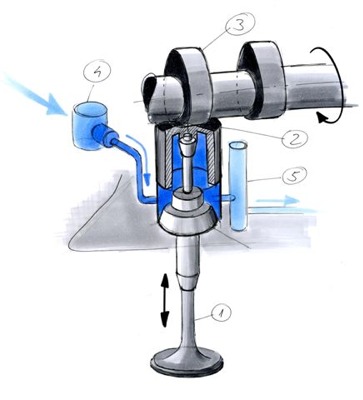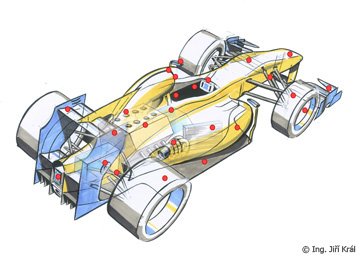Hydraulics valve control
Miroslav Sanytr├Īk/Boris Dacko | 10.2.08 | V├Īlce
F1 constructors
The construction of F1 engines is subject to many FIA restrictions. Apart from the displacement, number and constellation of cylinders it is also strictly ram-air charging, compound of the mixture etc. Given such requirements the only effective of way increasing the power is higher rpm. That, however, calls for a maximal weight reduction of all moving parts as well as the reduction of the friction. That is not enough though. With the ever-increasing rpm the constructors began to realize that the usual camshaft may not keep the pace. The camshaft itself may not be the problem, it is especially the spring closing the valve. At the current 19,000rpm no spring is able to fulfil its role. No matter what material it is made of, its design and material set the frequency of oscillation, which means that, at the given rpm, it is unable to close the valve. The desmodromic camshaft, closing the valve directly, without a spring, also does not comply, as it increases the number and correspondingly also the weight of the moving parts, which goes against the effort to reach the maximal rpm.
 |
A solution to this problem, that effectively allowed another raising the power, was brought up by Renault as early as the seventies (in the last generation of their turbo charged six-cylinders). The usual spring under the valve cup was substituted for by a hydraulics system. The space under the cup is in fact a pressurized tank with nitrogen, the pressure being maintained by a crank-shaft driven compressor and many regulation valves both on the intake and output. When the camshaft rotates, a cam opens the valve, which increases the pressure in the system even more. That ensures the easy return of the valve back into the seat during the next rotation of the camshaft. The oscillation frequency of such a spring is practically without limit, depending purely on the system pressure. To illustrate - at the maximal rpm each valve of an F1 engine opens 160 times per second.




